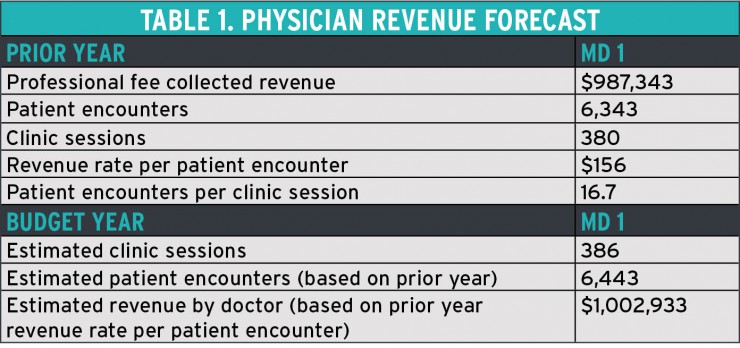The challenges facing ophthalmology practices today are daunting. Reimbursement cuts, EHR implementation, and ICD-10 are just a few of the areas that make running a successful practice more challenging than ever. Through the use of a meaningful budget, practices can take a proactive approach to staying on top of these challenges.
BUDGET PROCESS
The budgeting process produces a financial plan that incorporates a practice’s overall strategic goals and objectives. It should be used as a management tool to establish clear financial expectations that allow the practice to compare actual performance to budget.
The budget process can be broken down into four main components:
1. Review of historical financial statements and productivity reports
2. Assessment of changes likely to impact the practice in the future (including changes in professional fee reimbursement, changes in providers, anticipated capital purchases, new service lines, etc.)
3. Forecast of future productivity levels and operating expenses
4. Incorporation of the budget with monthly practice management reports
BUDGETING TIPS
Creating a budget that is meaningful for your practice does not have to be a daunting process. Practices should look to address the budget in individual components, such as revenue and key expense categories. Consider following these tips to get you started.
Historical data assessment.
In order to predict the future, it is important to begin the budgeting process with a thorough review of historical data. The review should include financial statements, physician productivity reports, employee payroll reports, marketing spend, etc., for the prior 2 to 3 years.
Budget setup.
The structure of the budget should be set up in a similar fashion to a profit and loss statement, with revenues on top followed by expenses. The goal should be to use the same revenue and expense categories that are on the practice income statement in order to integrate the budget into the practice accounting system.
Forecasting physician revenue.
Coming up with an accurate forecast of physician revenue can be accomplished in a number of ways. One approach is to use some objective data points, such as clinic sessions worked, patient encounters, and revenue, to build a forecast (Table 1).

Review of staffing levels and wages.
As the largest expense a practice incurs, employee wages and benefits must be accurately forecasted. It is recommended that practices set up a worksheet that breaks out each employee individually in order to forecast wages and benefits for the budget year (Table 2). This level of analysis also allows practices to assess the impact of adding new staff in the budget year.

Capital purchases.
When preparing a budget, it is important to include anticipated capital purchases, such as new equipment or facility improvements. Many practices struggle in this area because the purchase of new equipment can have a major impact on cash flow, which directly impacts owner income. Make sure to identify the anticipated cost, timing of the acquisition, source of financing, and depreciable life for the asset. Depending on the purchase method, the practice will likely incur interest and depreciation expenses, both of which should be included in the budget.
Be conservative (but accurate).
As a general rule of thumb, it is best to be conservative when forecasting revenue and expenses. It is almost always best to aim low on revenue and high on expenses. On the other hand, it is important to remember that a budget is an important planning tool and cannot be used for that purpose if it does not accurately reflect the current performance and future expectations of the practice.
Integrating the budget.
Once the revenue and expense projections are complete, the budget should be integrated into monthly reports that compare actual results to the prior year and budget. These reports will help monitor results and identify variances that management can use to create corrective action plans if necessary.
MAKING THE BUDGET A LIVING DOCUMENT
When properly executed, the practice budget should serve as one of the most important tools in running the practice. A proactive, comprehensive budget gives a practice the ability to properly track results, identify areas of concern, and quickly intervene when issues arise. Most importantly, a living budget gives practices the ability to navigate the numerous challenges in today’s marketplace.
